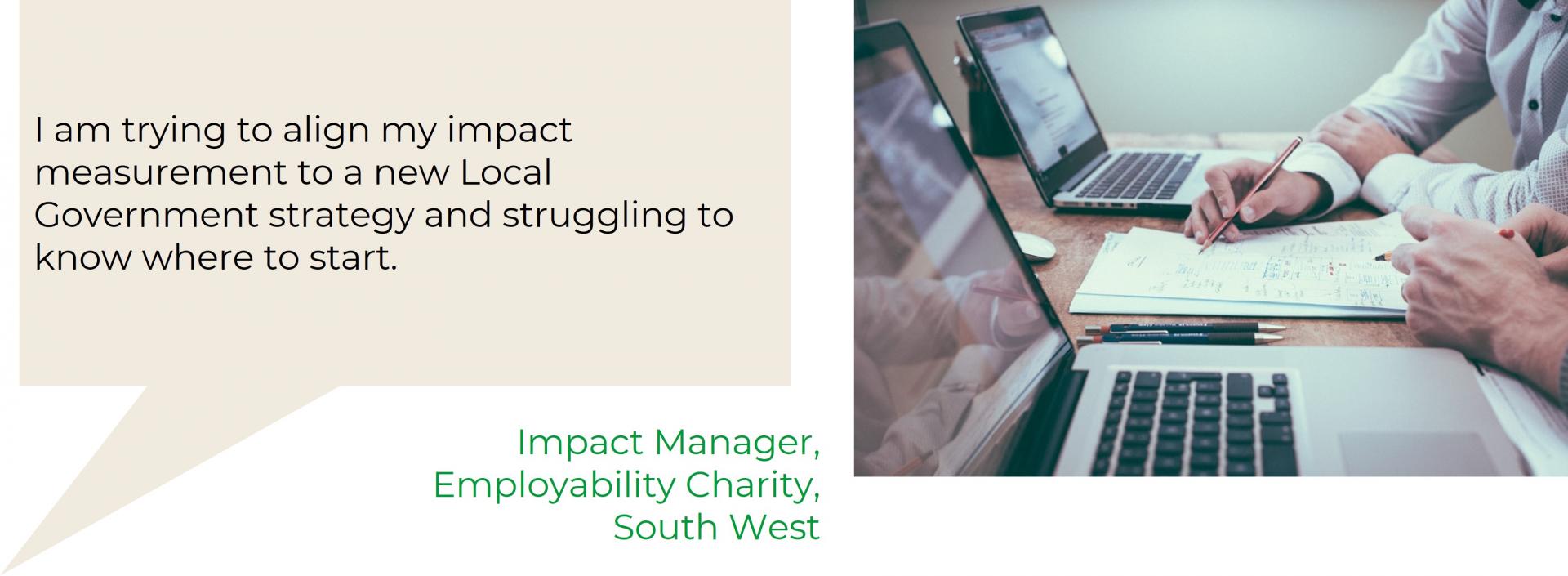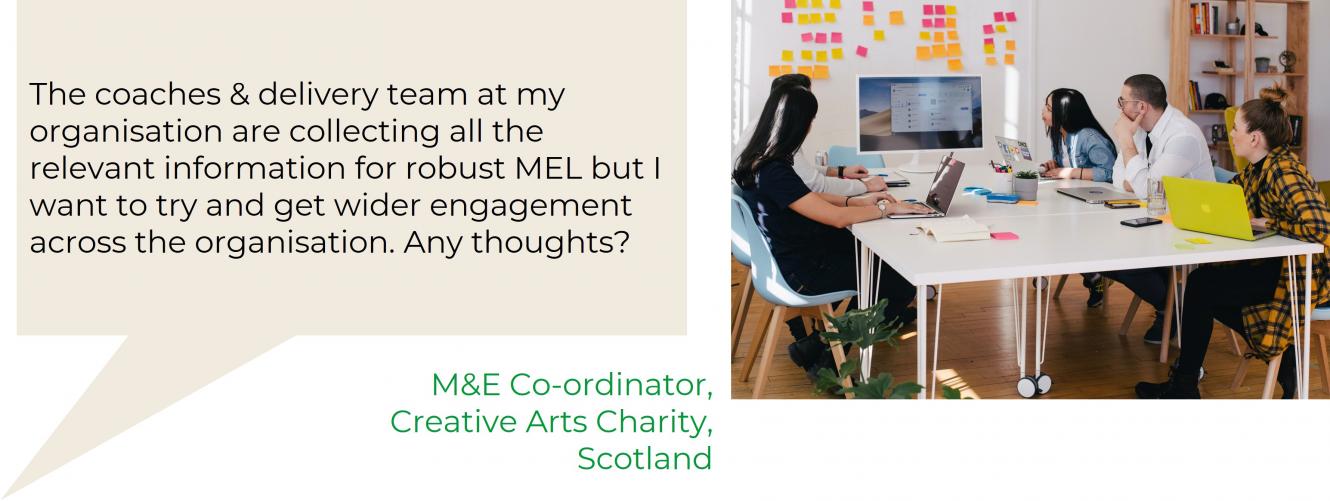MEL Clinics
MEL (Monitoring, Evaluation and Learning)
MEL (Monitoring, Evaluation and Learning) is an empowering approach for your organisation - but we know it can seem daunting...
Sharing can help. Here we look at a various questions that come up regularly from our users and partners. We have provided some insights and answers from our experienced team and don't miss our FREE MEL posters too!




What we have to say...
Think about starting to collect data about the school itself and work on the premise that participants - on the whole - will come from a certain catchment area. What is the school's postcode? What is the IMD level of that area, or physical activity level? Can you collect more information than just the number of people there? How old are they all? Can you speak to the teachers to understand if engagement in class has increased, attendance levels gone up, or attitudes towards physical activity changed?
Instead of conducting surveys can you start to ask them to put their hands up when asking questions as part of a post-session debrief and log the numbers of hands that go up to certain questions? Access to information in schools can always be tricky but data can be there to be collected!
Quite rightly, information in schools is subject to strict privacy rules for safeguarding - but if you think more widely there is data there to be collected, so you can evaluate your impact!


What we have to say...
Surveys are always a tricky one to get right. There are many accredited (and validated!) surveys out there - we have a guide to some of these - we always recommend they are a good place to start. Surveys allow you to benchmark against available data sets as well as knowing the surveys themselves have been verified and can be used as a source of truth.
If designing your own survey think about your outcomes. Every question you ask needs to be meaningful. Can you link all of the questions you’re asking back to your outcomes? If not, why are you asking that question?


What we have to say...
A great place to start is looking at your own objectives, your own outcomes. You can systematically map these outcomes to what the Local Government (LG) are trying to achieve. For example, if you’re working to increase confidence in your participants this may contribute to a LG outcome of improving wellbeing.
You may well find that not all of your outcomes do fit into the LG – that is absolutely normal and fine. Once you have mapped what you’re trying to achieve into the strategic outcomes you can start to think about how your outputs, your delivery links to your outcomes, then in turn, they will naturally map into the LG objectives too.


What we have to say...
Designing and developing indicators based on good practice is important. Clearly defined indicators can help tell you what objecitves have been met; what targets have been hit; what progress has been made; and what change has been happening.
A good place to start is thinking about making your indicators SMART. These are Specific (to what is being measured), Measureable (so they're clear), Attainable (so they're realistic), Relevant (so they link back to your outcomes and/or reporting needs) and Time Bound (a clear start and end to the measurement period).


What we have to say...
We champion putting the participant at the heart of the evaluation and opening up the process to those directly affected by your delivery. Participatory methods can be empowering for the participant; they can widen your knowledge base and really can improve story telling. Methods involve coaches, mentors, workshop leads or external agencies stepping back from writing subjective observational notes and handing control over to the participants' for insight and gaining the participant's views or motivations in interviews, focus groups and conversations.
Photos and videos with participants can also help tell your story and participant diaries or timelines can help the participant describe change in their own words. You do need to think about who should (and wants to) be involved in the process as well as responsibilites for different parties involved.


What we have to say...
Programme Team - For programme delivery to maximise effectiveness, there must be an understanding of what works and equally as important, what doesn’t. MEL is a continuous cycle. Design -> Measure -> Learn -> Improve (and repeat!). Engage your programmes team in the designing phase, feedback to them on the measurement & learning and provide them with as much information as possible to improve and adapt. Repeat this process and continue to feedback to them.
Fundraising Team – Not only is it important to communicate impact to prospective funders but it’s vital to sell the robust nature of your MEL processes for reassurance & credibility. Think about equipping your fundraising team with illustrative models of how you conduct MEL to support the data.
We champion not just promoting numbers but answering a ‘so what’ question. Present to your comms team why certain statistics are so impressive. Equally important is how you present data. Think about when it’s right to use %s or when to use hard numbers. Be transparent!
Many orgs set a % of programme budget allocated to MEL and start budgeting at early stages of programme design. Start thinking about staff time needed for MEL; any consultancy or system expenses; is your equipment fit for purpose or do you need additional devices for data capture.
Discover more...
If you are interested to find out more about MEL click the link below for our FREE poster pack resource - 5 posters containing the following...
- The Cycle of MEL: this shows the process of embedding the different stages of MEL - learning from one project or period of time as you enter each new phase
- Plan Your Data Collection: help those who are on the ground and engaging with your beneficiaries to collect good data and see thje bigger picture
- Different Types of Data to Prove Impact: explore the different data sets you can collect and understand what works best for you
- Different Types of Outcomes: be open to exploring the good, the bad and the unexpected
- 7 Principles of Effective Impact Practice: points to consider and go back to as you start to place MEL at the heart of what you do
We also have 5 TOP TIPS on how you can best use the Upshot system to help put the L(learning) in MEL - a quick read on how you can continue to replicate successes but also recognise and learn from mistakes!